September 9, 2024 | 14:44 GMT +7
September 9, 2024 | 14:44 GMT +7
Hotline: 0913.378.918
September 9, 2024 | 14:44 GMT +7
Hotline: 0913.378.918
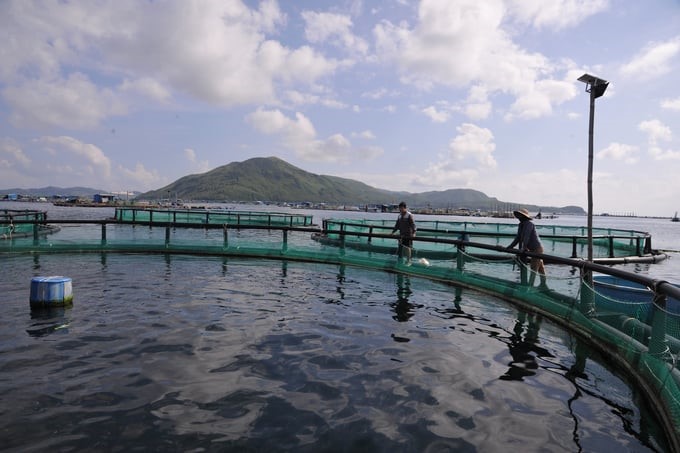
Model of aquaculture using HDPE cages in the farming area of Song Cau town, Phu Yen province. Photo: KS.
On July 31, in Song Cau town, Phu Yen Agricultural Extension Center organized an agricultural seminar for farmers in localities in the province with the theme "Solutions for Sustainable Aquaculture and Seafood Development." More than 100 aquaculture farmers in Song Cau town and Tuy An district attended.
According to the Phu Yen Sub-Department of Fisheries, the province's aquaculture area in the first 6 months of the year reached over 1,800 hectares. As of June 31, the total number of cages counted in localities was 186,036 cages, of which Song Cau town had 134,612 cages, Tuy An district had 12,924 cages, and Dong Hoa town had 38,500 cages. Total aquaculture output is estimated to reach more than 4,900 tons.
However, currently, farming cages are mainly made of wood and bamboo materials, which are not adapted to natural disasters. Faced with the above situation, to develop sustainable marine aquaculture, converting traditional cages to HDPE cages is extremely essential.
Mr. Tran Thanh Tri, Sales Director of STP Khanh Hoa Aquaculture Joint Stock Company, said that the company is now providing high-tech aquaculture solutions using HDPE cages in Phu Yen.
According to Mr. Tri, HDPE cages are flexible, with material durability of up to 40–50 years. They are also environmentally friendly. The company currently has square cages for lobster farming that can be used for near-shore farming areas. When raising lobsters, the handrail can be removed for easy and flexible operation. This cage type can also be converted to raise fish.
In addition, the company also has fish and shrimp farming cages using a floating lift system, suitable for near-shore farming areas or in closed bays, and round cages for fish farming outside 3 nautical miles. The cages are equipped with cage positioning devices and cameras to monitor and analyze the health and ability to catch prey of farmed aquatic animals.
Mr. Tri said that the company currently has solutions to support aquaculture farmers in accessing HDPE cages, such as leasing, paying in installments at preferential costs, or supporting up to 30% of conversion costs.
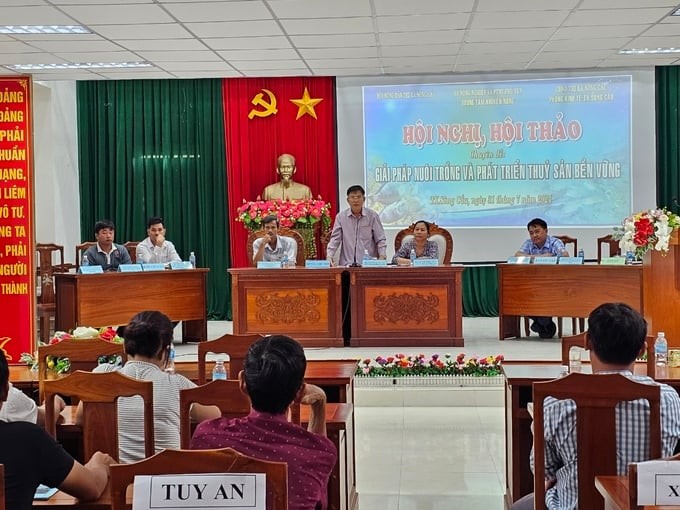
Delegates answered questions from aquaculture farmers at the seminar. Photo: KS.
At the seminar, many farmers wished to convert to HDPE cages to replace traditional cages. However, HDPE cages have a large investment cost, beyond the ability of many farmers. Therefore, they hope the Government will have supportive policies to convert to this cage type.
Ms. Le Thi Hang Nga, Deputy Director of the Phu Yen Sub-Department of Fisheries, said that converting to HDPE cages is now an inevitable trend in marine aquaculture, widely applied by advanced countries. Therefore, farmers in Phu Yen also need to convert to this cage type to adapt to natural disasters, ensure property, and ensure environmental landscapes. However, Ms. Nga noted that when farmers apply cages of new material, they need to reduce traditional cages. In the near future, when localities allocate the water surface of farming areas, farmers should boldly switch to farming cages in this direction.
At the seminar, aquaculture farmers were also introduced by the Research Institute for Aquaculture No. 3 (referred to as Institute No. 3) to a new farming object, which is sandfish (Holothuria scabra). This farming object is easy to raise, does not require investment in food, is less susceptible to diseases, and especially improves the environment very well. Abandoned ponds can raise this object. Currently, scientists from Institute No. 3 have mastered the technology to produce sandfish seeds.
In addition, farming households are also introduced to a 3-phase shrimp farming solution, helping to facilitate the management, control, and control of diseases for each farming stage.
STP Khanh Hoa Aquaculture Joint Stock Company introduced three comprehensive support packages so that farmers could rapidly and conveniently access this modern aquaculture technology.
Firstly, under the installment plan package, farmers are provided with preferential installment payment assistance for a duration of five years. After three to five years, farmers will be granted ownership of these assets.
Secondly, under the full investment cost support package, despite the high initial costs, STP Company will support fishermen with up to 30% of the costs to switch from a traditional wooden cage system to modern HDPE aquaculture cages.
Thirdly, under the leasing package, farmers have the option to lease HDPE cages for a small monthly fee and pay quarterly/yearly, with payments made on a quarterly/yearly basis, as an alternative to committing to a substantial upfront investment.
Translated by Thu Huyen
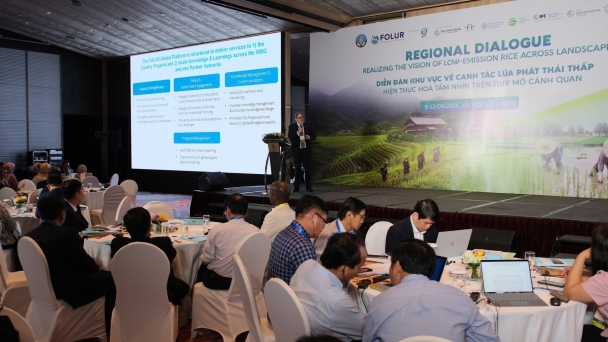
(VAN) World Bank is very proud to be working with Vietnam, but also working on how we can take that learning from Vietnam to other countries, FOLUR representative spoke to VAN.

(VAN) Program 'Realizing the vision of low-emission rice across landscapes' on September 9 aiming to foster collaboration, build consensus, and identify feasible solutions about the challenges in developing sustainable rice value chains across diverse landscapes.

(VAN) For Nguyen Tham, Bach Ma National Park is his life. It is where he grew up and where he has supported his family, so every day he contributes to protecting the forest.
/2024/09/06/0218-3-204340_727.jpg)
(VAN) On the morning of September 6, the MARD, in coordination with South Korea's Ministry of Agriculture, Food, and Rural Affairs, held the Inauguration Ceremony of a Smart Pig Farm in Tam Diep, Ninh Binh.

(VAN) Green tourism has gained increasing attention over the years, becoming a key development strategy for many countries around the world, including Vietnam.
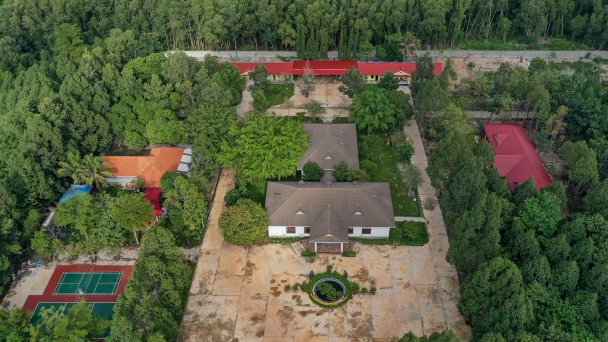
(VAN) With the quickest return on investment, highest productivity and most stable workforce, it is undeniable that Ba Ria Kampong Thom holds the flagship position in rubber development in Cambodia.
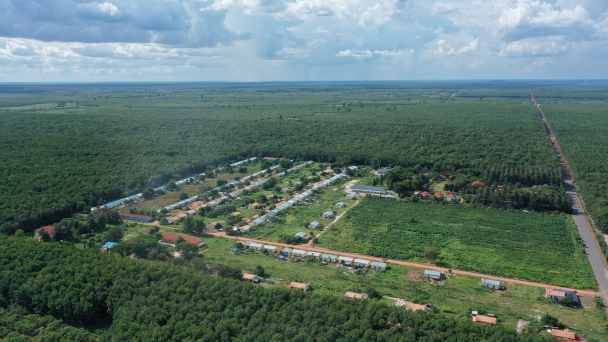
(VAN) With the permit granted at the end of 2006 and implementation in 2007, Tan Bien Kampong Thom Rubber Development Co., Ltd. is the entity that planted VRG's first rubber trees in Cambodia.